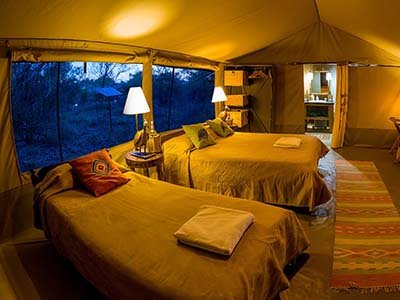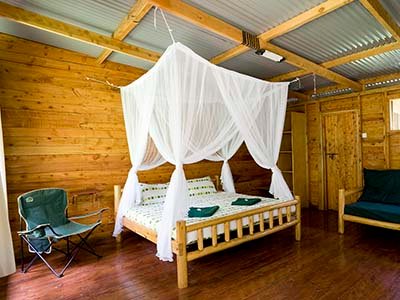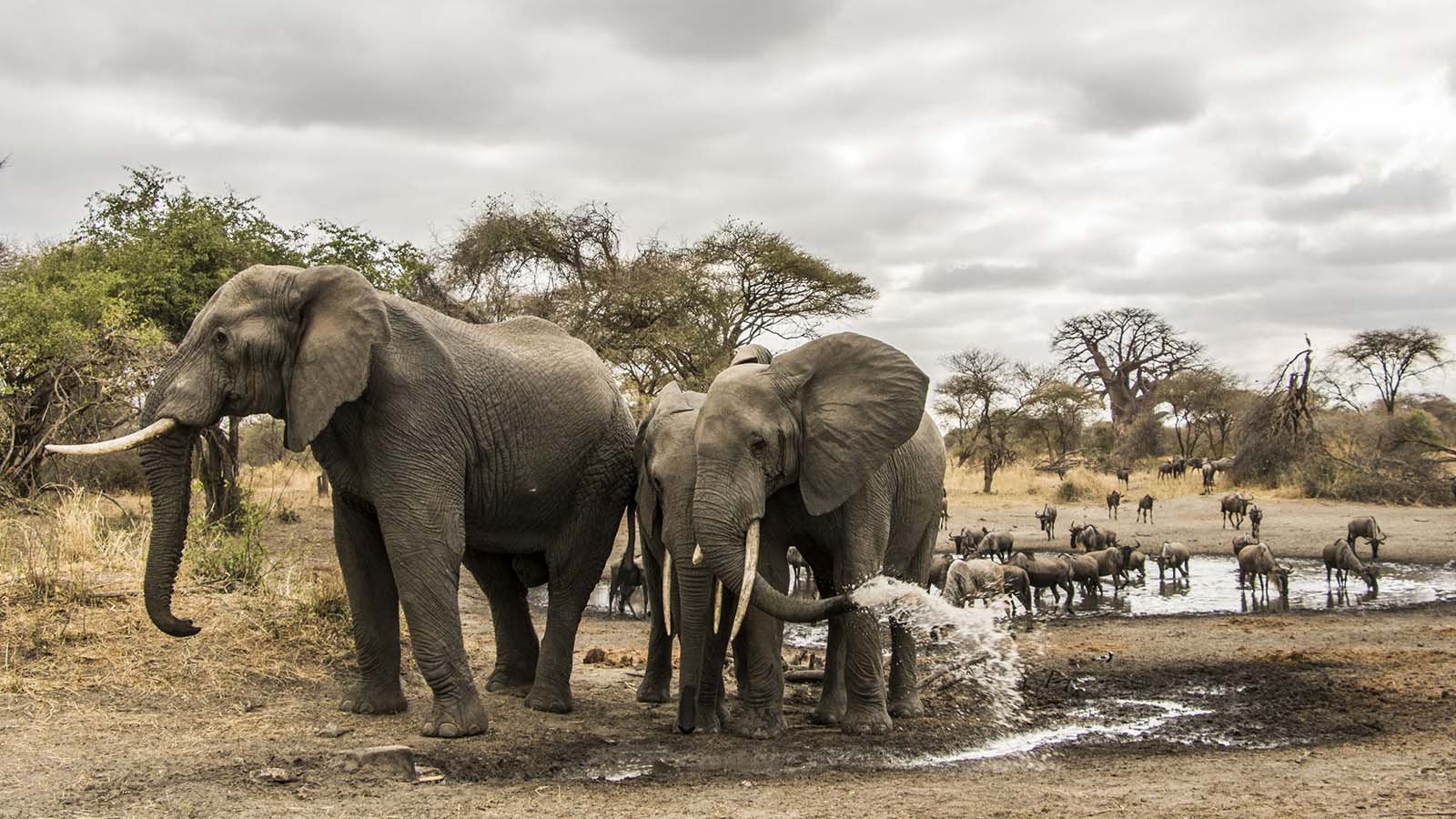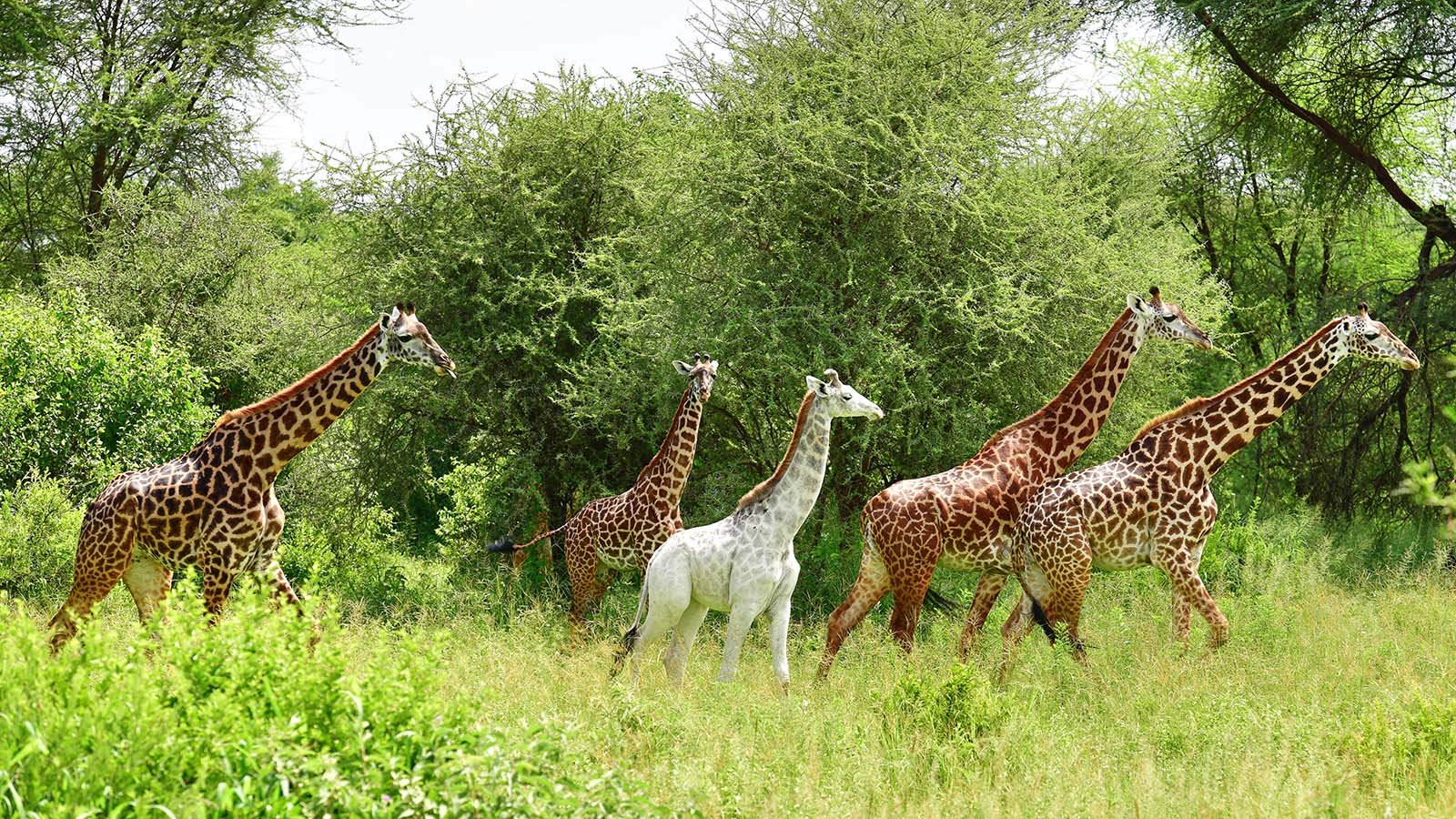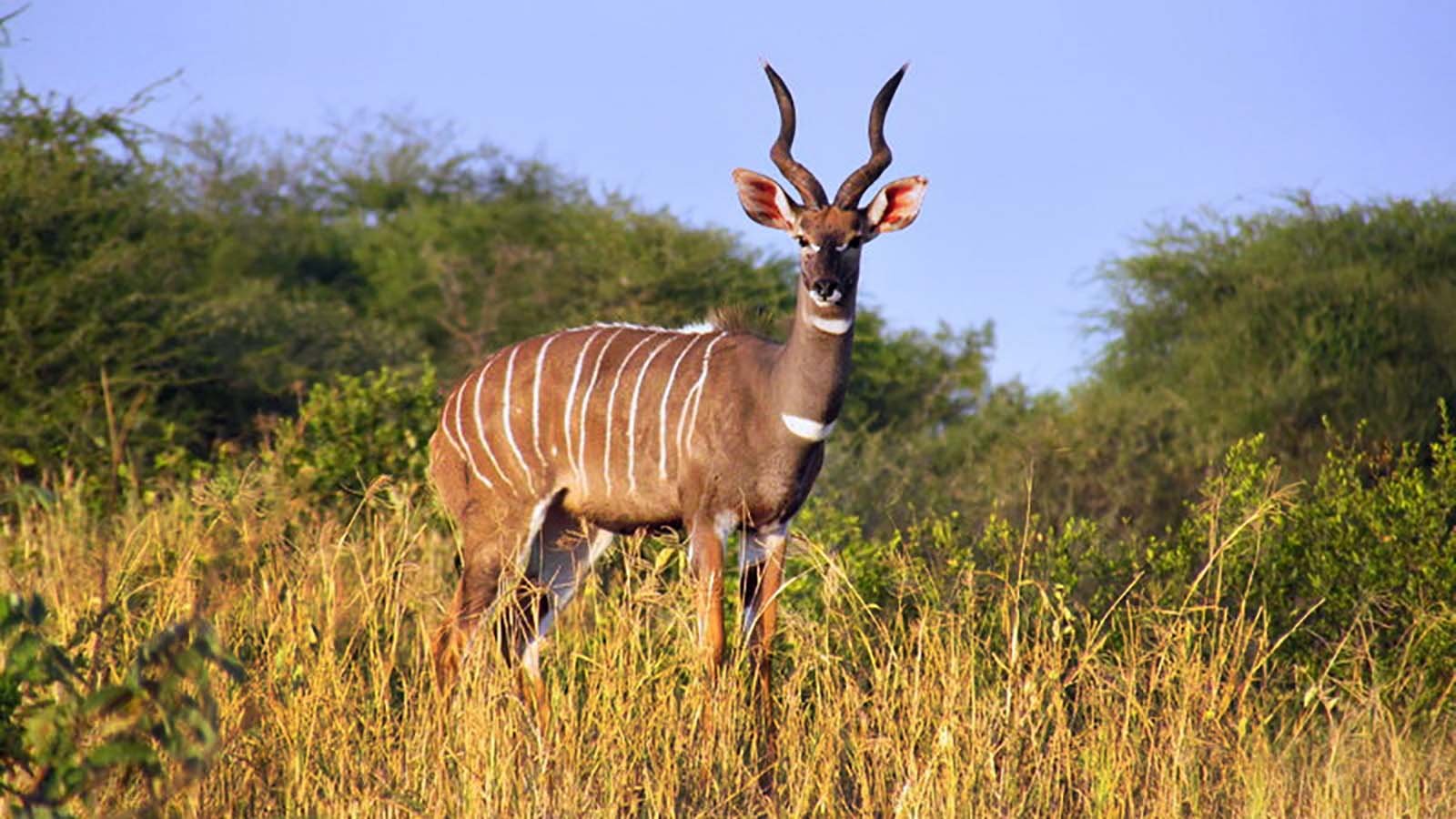Tarangire National Park
During the yearly wet season, the Tarangire Ecosystem’s wild animals rely on the Tarangire River for their freshwater needs. Long-distance wildlife migrations of zebra and wildebeest define the Tarangire Ecosystem.
From the surrounding dispersed and calving regions during the rainy season, hundreds of animals converge on Tarangire National Park during the dry season.
“Tarangire National Park is attractive and unique because of its limited vegetation, which is littered with baobab and acacia trees, and its high population density of elephants compared to the rest of Tanzania.” Tanzania Tourism
The park’s terrain consists of granitic mountains, river basins, and wetlands over about 2,850 square kilometres (1,100 square miles) size. Baobab trees, Acacia forests, Combretum forests, seasonally flooded grasslands, and a variety of other plant life all coexist in this ecosystem.
The park is also famous for its high density of baobab trees and elephant herds, as well as its 553 species of birds. Waterbuck, giraffes, Grant’s gazelles, dik-diks, impalas, elands, banded mongooses, vervet animals, and olive baboons are all regular residents. A few examples of predators include the lion, the honey badger, the cheetah, the caracal, the leopard, and the African wild dog.
Eloise, a 57-year-old elephant, gave birth to twins in Tarangire in August 2017; she is the oldest elephant ever recorded as having given birth to twins.
Also in 2015, a rare white giraffe made an appearance in the park. Leucism is the medical term for this unusual whiteness.
Tarangire National Park Flora and Fauna
Over 2,500 elephants were counted in Tarangire National Park during a 2009 census, and this number is steadily rising. This, together with the park’s many ancient Baobab trees, gives the park a really distinctive character.
The last count recorded 6,000 buffalo, 30,000 zebra, 2700 giraffes, 25,000 wildebeest, 5,000 elands, 30,000 impalas, and 2,000 animals in the park; however, these figures are more than 30 years old, so the population should have risen significantly since then.
Elephant grass woodlands and a few palm trees along the banks of the Tarangire River, which winds its way through the park.
Tarangire National Park Avian Life
Tarangire National Park is located on the westernmost edge of the Somali-Masai biome, and as such, it is home to over 500 different bird species, the majority of which are found only in dry savannahs. Essential birds include the yellow-collared lovebird and the ashy starling, both of which are unique to the region.
Getting there
What to do
The northern circuit safari of Tanzania often includes Tarangire and Serengeti National Park and Ngorongoro Crater. However, the Tarangire safari experience is less commercialized, especially in the southern part of the park and out of high season.
Game Drives
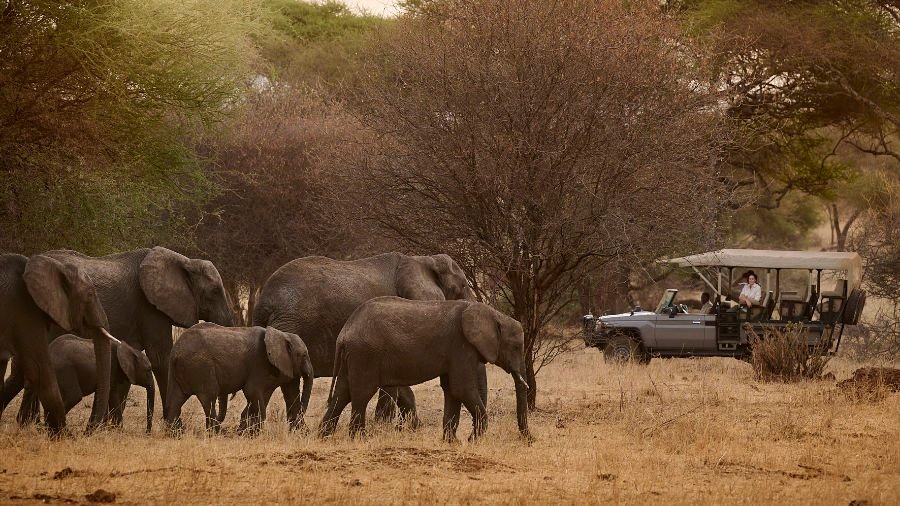
During the dry season, the river at Tarangire becomes a magnet for large herds of elephants, earning the park widespread recognition. It’s not too much of a stretch to claim that, during peak periods, you might easily observe herds of up to 300 elephants in a single day. Elephants at Tarangire used to be considerably more fearful than their counterparts in Manyara and Ngorongoro, but they are now normally extremely calm.
Night Game Drives
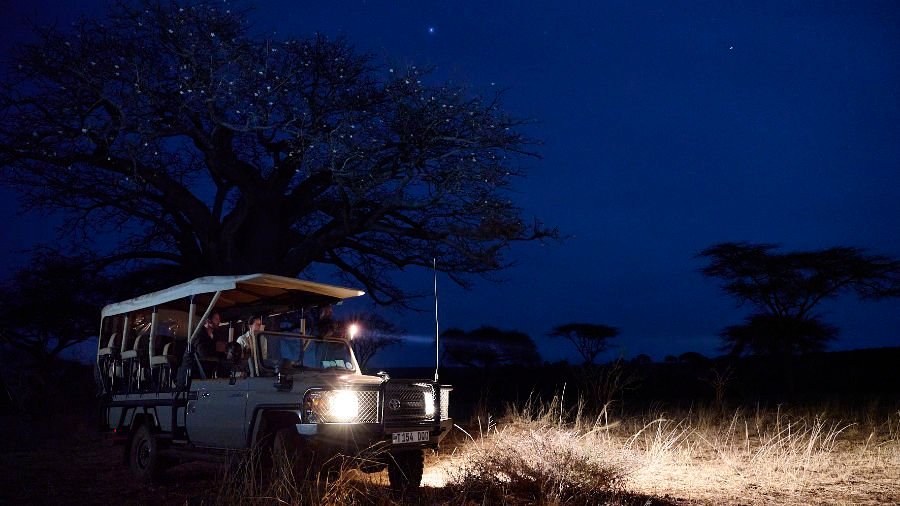
In Tarangire, discover the joys of a night safari. Relax in the luxury of Sanctuary Swala’s tailored safari vehicle as evening sets and journey into the park transformed by night.
Look for nocturnal species that are seldom seen because this is one of the few areas in northern Tanzania where you may go on a safari at night. You could see an African wild cat, the elusive leopard, or the big eyes of a bush baby at night.
With the right illumination, you may detect lions and hyenas, as well as smaller animals like spotted genets, servals, bat-eared foxes, owls, and nightjars. (There is a maximum of 5 persons.)
Walking Safaris
Birds and Bird Watching in Tarangire National Park
Accommodation for the park
There are a wide range of accommodation choices for Tarangire National Park offering varying levels of luxury. Options range from budget, mid-range to luxury lodges and luxury tented camps.
Some of the top lodges and safari camps in Tarangire National Park are Chem Chem, Forest Chem Chem, Kirurumu Tarangire, Kuro Tarangire, Lemala Mpingo Ridge, Little Chem, Tarangire Sopa Lodge, Tarangire Simba Lodge, Elewana Tarangire Treetops, Baobab Tented Camp, Acacia Tarangire Luxury Camp, Boundary Hill Lodge, Sangaiwe Tented Lodge, Tarangire Safari Lodge, Maramboi Tented Camp and Maweninga Camp.
Climate and Weather
Tarangire has a warm, dry climate, with average highs of 75 to 85 degrees Fahrenheit (24 to 30 degrees Celsius) and lows of 55 to 65 degrees Fahrenheit (13 to 18 degrees Celsius). The weather will be different depending on the time of year.
In most years, the brief rains fall in November and December, with a few scattered showers before the long rains that fall between the middle of March and the end of May. March and April, and sometimes even parts of May, are often the wettest months, which also happens to be the off season for tourists.
Best times to visit the park
Animal populations rise and fall with the Dry and Wet seasons that the park endures. More migrating birds stop through during the wet season, making it a better time for birdwatchers.
The dry months of June through October are prime time to explore Tarangire National Park. This is the best time to go for game drives because that’s when most of the animals leave the park to converge along the Tarangire River.
While the middle of the Wet season can be somewhat chilly, the weather is often bright and pleasant. The park is bustling with visitors during peak season, although off-peak times may offer better pricing.
Accommodation options
Exclusive Camps and lodges
Tarangire National Park has some opulent hotels and tented camps available to you on an African Safari to this magnificent park. And this includes:-
Tarangire Sopa Lodge: This luxurious exquisite lodge provides cosy accommodations with private verandas that overlook the beautiful landscape and en-suite bathrooms. The lodge also has a restaurant, bar, and swimming pool.
Tarangire Treetops: This tented camp provides cosy lodging in permanent tents with en-suite toilets, solar lights, and hot water. The camp provides guided safaris in addition to other activities, a restaurant, and a bar.
Tarangire Safari Lodge: This luxurious lodge provides cosy accommodations with private verandas that overlook the park and en-suite baths. Along with a restaurant, bar, and pool, the resort also offers guided safaris and other activities.
Maramboi Tented Camp: The guests stay in luxurious permanent tents equipped with their own private bathrooms, as well as solar panels for lighting and a hot water system. The camp provides guided safaris in addition to other activities, a restaurant, and a bar.v
Tarangire River Camp: This tented camp provides pleasant lodging in permanent tents with en-suite toilets, solar lights, and hot water. The camp provides guided safaris in addition to other activities, a restaurant, and a bar.
Budget accommodation options
There are quite a few budget-friendly accommodation alternatives in and around the park. They provide modest facilities for individuals on a tight budget who nevertheless wish to experience a Tanzania wildlife safari or a birding safari in the region.
Here are some budget-friendly solutions to consider:
Tarangire Simba Lodge: This lodge has comfortable rooms with shared bathrooms, a restaurant, and a bar. It’s right outside the park, but you can go on guided safaris and do other things there.
Budget Campsite: This campsite has basic amenities like toilets and running water, but visitors need to bring their own camping gear. Anybody wishing to camp inside the park for a low price should look into this.
Tarangire Public Campsite: The campsite has basic amenities like toilets and running water, but campers need to bring their own gear. It is an affordable choice for individuals who prefer to camp within the park.
Tarangire Twiga Campsite: Visitors need to bring their own camping gear, but there are basic amenities like toilets and running water. For those who want to camp inside the park, it’s an affordable choice.
Tarangire Safari Lodge Campsite: This has basic amenities like toilets and running water, but people need to bring their own camping gear. Those who choose to camp inside the park can do so at a reasonable cost.

